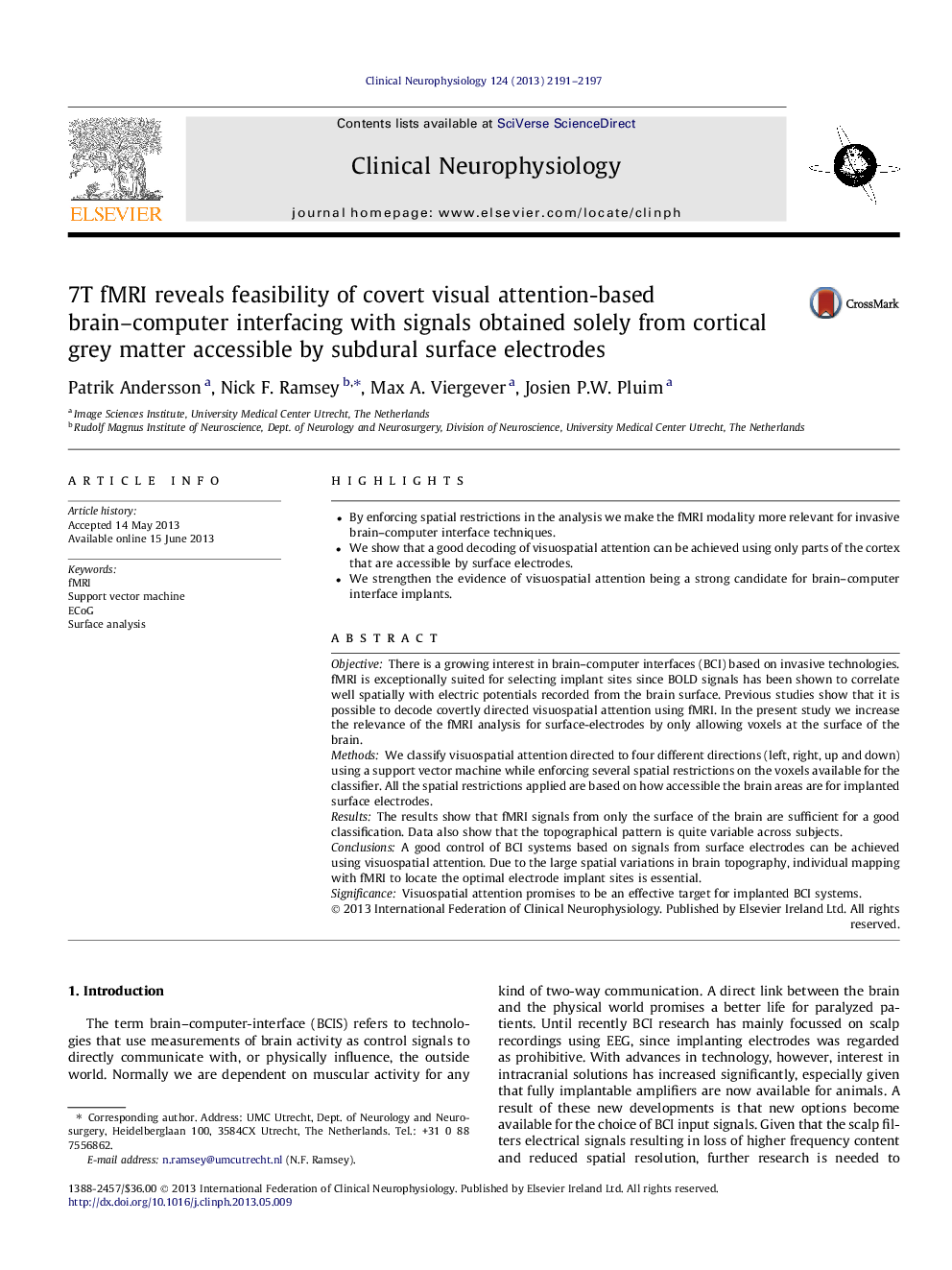| کد مقاله | کد نشریه | سال انتشار | مقاله انگلیسی | نسخه تمام متن |
|---|---|---|---|---|
| 3043321 | 1184975 | 2013 | 7 صفحه PDF | دانلود رایگان |

• By enforcing spatial restrictions in the analysis we make the fMRI modality more relevant for invasive brain–computer interface techniques.
• We show that a good decoding of visuospatial attention can be achieved using only parts of the cortex that are accessible by surface electrodes.
• We strengthen the evidence of visuospatial attention being a strong candidate for brain–computer interface implants.
ObjectiveThere is a growing interest in brain–computer interfaces (BCI) based on invasive technologies. fMRI is exceptionally suited for selecting implant sites since BOLD signals has been shown to correlate well spatially with electric potentials recorded from the brain surface. Previous studies show that it is possible to decode covertly directed visuospatial attention using fMRI. In the present study we increase the relevance of the fMRI analysis for surface-electrodes by only allowing voxels at the surface of the brain.MethodsWe classify visuospatial attention directed to four different directions (left, right, up and down) using a support vector machine while enforcing several spatial restrictions on the voxels available for the classifier. All the spatial restrictions applied are based on how accessible the brain areas are for implanted surface electrodes.ResultsThe results show that fMRI signals from only the surface of the brain are sufficient for a good classification. Data also show that the topographical pattern is quite variable across subjects.ConclusionsA good control of BCI systems based on signals from surface electrodes can be achieved using visuospatial attention. Due to the large spatial variations in brain topography, individual mapping with fMRI to locate the optimal electrode implant sites is essential.SignificanceVisuospatial attention promises to be an effective target for implanted BCI systems.
Journal: Clinical Neurophysiology - Volume 124, Issue 11, November 2013, Pages 2191–2197